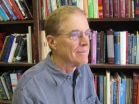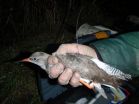(Press-News.org)
SALT LAKE CITY, Nov. 27, 2012 – A University of Utah study produced new mathematical support for a theory that explains why men in some cultures often feed and care for their sisters' children: where extramarital sex is common and accepted, a man's genes are more likely to be passed on by their sister's kids than by their wife's kids.
The theory previously was believed valid only if a man was likely to be the biological father of less than one in four of his wife's children – a number that anthropologists found improbably low.
But in the new study, University of Utah anthropology Professor Alan Rogers shows mathematically that if certain assumptions in the theory are made less stringent and more realistic, that ratio changes from one in four to one in two, so the theory works more easily.
In other words, a man's genes are more likely to be passed by his sisters' children if fewer than half of his wife's kids are biologically his – rather than the old requirement that he had to sire fewer than a quarter of his wife's kids, according to the study published online Nov. 28 in the journal Proceedings of the Royal Society B.
"Imagine a mutation that encourages its bearers, if they are men, to be helpful and invest resources in the children of their sisters," Rogers says. "If that man lives in a society where most of his wife's children were fathered by other men, then this gene may not be in many of his wife's children. A man really doesn't know if any of his wife's kids were fathered by him, but he knows he and his sister have the same mom. So this gene may, in fact, be in more of his sisters' children."
"Thus, over time, the frequency of this gene increases because men are increasing the survival and fitness of their sisters' children – the ones more likely to carry the gene," he adds.
The new study "shows that it is much easier than we thought for your niece to be a closer relative than your wife's daughter," Rogers says.
The research was funded by the University of Utah.
Why Men Help their Sisters' Kids: Theory and Debate
"Men invest in children in many ways; they care for them, feed them and leave them resources when the men die," Roger says. "But in some human societies, these are the children of sisters rather than those of wives. For decades, anthropologists have wondered why."
Extramarital mating is common in some cultures, including in central Africa and South America, he says, but not in the U.S. or other Western societies where infidelity, as prevalent as seems, much is less common by comparison.
"In some societies it is expected; it isn't seen as cheating," Rogers says. "And it isn't really just about promiscuity. Even where extramarital sex isn't common, women get divorced and remarried and have households with offspring from several men."
Rogers says: "In many societies where extramarital mating is the norm, men may not share genes with the children of wives. There is less doubt about relatedness to sisters' children. This suggests an interesting hypothesis: perhaps natural selection has shaped this practice, by encouraging males to direct investment toward genetic relatives."
"There was great enthusiasm for this idea during the 1970s, until a problem came to light," he continues. "Simple calculations suggested that the explanation collapses unless men father fewer than about one in four of their wife's children. Many have doubted that the number – the paternity threshold number – could really be this low."
Rogers' new study shows it is much easier than that for the idea to be true – for natural selection to favor men who help their sisters' kids. He shows the theory holds true if men father fewer than half their wife's kids rather than fewer than one-quarter of those kids – something much more likely to happen in reality.
The study shows this mathematically by relaxing assumptions previously made as part of the uncle-caretaker theory.
Rogers says it isn't enough to take into account the probability of paternity – the odds that a child's biological father also is his mother's husband. The new study shows that if the assumptions made in old studies are relaxed, another parameter also must be measured: "the probability a brother and sister had the same biological father. The higher that probability, the more closely related a man is to his sister and his sister's kids."
Making Old Assumptions More Realistic
Rogers examined four assumptions made in previous studies and changed them to be more realistic. In this more realistic theory, men are more likely to share genes with their sister's children than under the old theory.
The first two assumptions of the existing theory were that "women are equally receptive to extramarital affairs and that each has an infinite number of paramours," says Rogers. "These assumptions both lower estimates of relatedness between men and the children of their sisters. Relaxing either assumption increases our estimate of the fitness payoff to men who invest in children of sisters."
[Rogers notes the theory applies to a man's sisters' children, but not to his brothers' children "because your brother has no more confidence than you do about the paternity of his wife's children. Sisters are a better bet, because they know who their kids are."]
"Previous calculations assume every woman in the population is equally promiscuous," Rogers says. "If you relax that assumption and instead assume some women are more promiscuous than others, it means men are more likely to share genes with their sisters' children."
"The earlier theory also assumed women each woman had an infinite number of boyfriends," instead of a range from one to infinity, he adds. "It made the math simple – and it gave you a wrong answer."
The new study showed mathematically that a man's relatedness to his sister's kids increases if his wife has fewer rather than more extramarital partners and if she allocates sex – and thus having children – unevenly among them.
A third problem with previous studies is that they assumed resources given to any child were equally valuable. Rogers says that didn't account for the fact that giving your wife's kids twice as many resources isn't necessarily twice as good – once the kids have what they need – but may be only half again as good for them. So the man may be better off also giving resources to his sisters' kids.
"The old model didn't account for that, and because of that, it biased things in favor of the wife's children. When the nieces and nephews share fewer genes, they end up getting zero resources rather than some reduced share, as they should."
The fourth problem with most previous calculations was that they didn't account for a simple reality: "The best thing for a man to do depends on how his wife is going to respond," Rogers says. "If wives punish their husbands one way or another for delivering goods to their nieces and nephews, it's not just the husband deciding what is best for the husband. Women have an active role in all of these decisions and that role was ignored in the previous model."
Another study published recently took that into account, making it easier to understand how natural selection might favor men who invest in their sisters' offspring.
Rogers believes that natural selection and genetics ultimately contributes to people helping their relatives in most cultures, even if the primary motivation may be tax breaks for those who provide cash gifts to relatives rather than passing on one's genes.
"People are nice to relatives all over the world, and I think selection has something to do with that," he says.
INFORMATION:
University of Utah Communications
201 Presidents Circle, Room 308
Salt Lake City, Utah 84112-9017
801-581-6773 fax: 801-585-3350
www.unews.utah.edu
How infidelity helps nieces and nephews
Men may share more genes with sisters' kids than with cheating wife's kids
2012-11-28
ELSE PRESS RELEASES FROM THIS DATE:
Ecologists shed new light on effects of light pollution on wildlife
2012-11-28
Coasts and estuaries are among the most rapidly developing areas on Earth. Night-time satellite images of the planet show that except Antarctica, continents are ringed with halos of brightly-lit human development. But coasts are also key wildlife sites. Every year, millions of waterbirds arrive from the Arctic to overwinter on UK coasts, yet scientists remain largely in the dark about how these birds respond to the bright lights of coastal cities and industry.
To shed light on the issue, Dr Ross Dwyer and colleagues from the University of Exeter investigated how artificial ...
Sea-levels rising faster than IPCC projections
2012-11-28
Sea-levels are rising 60 per cent faster than the Intergovernmental Panel on Climate Change's (IPCC) central projections, new research suggests.
While temperature rises appear to be consistent with the projections made in the IPCC's fourth assessment report (AR4), satellite measurements show that sea-levels are actually rising at a rate of 3.2 mm a year compared to the best estimate of 2 mm a year in the report.
The researchers, from the Potsdam Institute for Climate Impact Research, Tempo Analytics and Laboratoire d'Etudes en Géophysique et Océanographie Spatiales, ...
Most women who have double mastectomy don't need it, U-M study finds
2012-11-28
ANN ARBOR, Mich. — About 70 percent of women who have both breasts removed following a breast cancer diagnosis do so despite a very low risk of facing cancer in the healthy breast, new research from the University of Michigan Comprehensive Cancer Center finds.
Recent studies have shown an increase in women with breast cancer choosing this more aggressive surgery, called contralateral prophylactic mastectomy, which raises the question of potential overtreatment among these patients.
The study found that 90 percent of women who had surgery to remove both breasts reported ...
Common heart failure drugs could benefit more patients
2012-11-28
Heart failure affects 3 per cent of the overall population, and exists in two forms: reduced ability to contract the heart and reduced ability to relax the heart. The former affects younger patients, mostly men, and is treatable. The latter, called HFPEF (heart failure with preserved ejection fraction), affects older patients and women, and until now there has not been any treatment available against the disease.
In the present study, a team comprising researchers at Karolinska Institutet, Linköping University, Stockholm South General Hospital and Karolinska University ...
Digoxin increases deaths in patients with atrial fibrillation
2012-11-28
Digoxin, a drug that has been used worldwide for centuries to treat heart disease, is associated with a significant increase in deaths in patients with atrial fibrillation (AF), according to results from a study published online today (Wednesday) in the European Heart Journal [1].
Digoxin is extracted from the foxglove plant (digitalis) and it helps the heart beat more strongly and with a more regular rhythm. It is commonly used in AF patients, and also in patients with heart failure. However, it can be problematic to use successfully as there is a narrow dose range at ...
Thyroid problems linked to irregular heart rhythm
2012-11-28
People with an overactive thyroid gland (hyperthyroidism) carry a greater risk of developing irregular heart rhythm (known as atrial fibrillation) than those with normal thyroid function, finds a study published on bmj.com today.
As such, the researchers suggest there should be an increased focus on atrial fibrillation in patients with raised thyroid function.
Hyperthyroidism occurs when the thyroid gland makes too much thyroxine (thyroid hormone), causing many of the body's functions to speed up. About 1 in 100 women and 1 in 1,000 men develop hyperthyroidism at some ...
One child mothers with pre-eclampsia at higher risk of heart problems
2012-11-28
Women who develop pre-eclampsia during their first pregnancy (known as preterm pre-eclampsia) - and who don't go on to have any more children – are at greater risk of dying from heart disease in later life than women who have subsequent children, finds a study published on bmj.com today.
Women who develop the condition only in the final weeks of pregnancy (known as term pre-eclampsia) are at less risk.
This high risk to one child mothers has not been previously reported and suggests that these women need special monitoring, especially if their pre-eclampsia was preterm. ...
Projected sea-level rise may be underestimated
2012-11-28
That sea level is rising faster than expected could mean that the Intergovernmental Panel on Climate Change's (IPCC) sea-level rise projections for the future may be biased low as well, their results suggest.
Sea-level rise potentially affects millions of people all around the world in coastal areas as well as megacities like Tokyo.
"Global temperature continues to rise at the rate that was projected in the last two IPCC Reports. This shows again that global warming has not slowed down or is lagging behind the projections," Rahmstorf says. Five global land and ocean ...
Malaria study suggests drugs should target female parasites
2012-11-28
Fresh insight into the parasite that causes malaria suggests a new way to develop drugs and vaccines to tackle the disease.
Research into malaria parasites – which exist in male and female forms, and mate to spread the disease – suggests that treatments would be more likely to succeed if designed to target female forms of the parasite.
Scientists found that male parasites can adapt to new surroundings faster than the females. When malaria infects the bloodstream after a mosquito bite, the male parasites are better able to react quickly to repeated attacks by the immune ...
For some feathered dinosaurs, bigger not necessarily better
2012-11-28
Every kid knows that giant carnivores like Tyrannosaurus rex dominated the Cretaceous period, but they weren't the only big guys in town. Giant plant-eating theropods – close relatives of both T. rex and today's birds – also lived and thrived alongside their meat-eating cousins. Now researchers have started looking at why dinosaurs that abandoned meat in favor of vegetarian diets got so big, and their results may call conventional wisdom about plant-eaters and body size into question.
Scientists have theorized that bigger was better when it came to plant eaters, because ...
LAST 30 PRESS RELEASES:
Numbers in our sights affect how we perceive space
SIMJ announces global collaborative book project in commemoration of its 75th anniversary
Air pollution exposure and birth weight
Obstructive sleep apnea risk and mental health conditions among older adults
How talking slows eye movements behind the wheel
The Ceramic Society of Japan’s Oxoate Ceramics Research Association launches new international book project
Heart-brain connection: international study reveals the role of the vagus nerve in keeping the heart young
Researchers identify Rb1 as a predictive biomarker for a new therapeutic strategy in some breast cancers
Survey reveals ethical gaps slowing AI adoption in pediatric surgery
Stimulant ADHD medications work differently than thought
AI overestimates how smart people are, according to HSE economists
HSE researchers create genome-wide map of quadruplexes
Scientists boost cell "powerhouses" to burn more calories
Automatic label checking: The missing step in making reliable medical AI
Low daily alcohol intake linked to 50% heightened mouth cancer risk in India
American Meteorological Society announces Rick Spinrad as 2026 President-Elect
Biomass-based carbon capture spotlighted in newly released global climate webinar recording
Illuminating invisible nano pollutants: advanced bioimaging tracks the full journey of emerging nanoscale contaminants in living systems
How does age affect recovery from spinal cord injury?
Novel AI tool offers prognosis for patients with head and neck cancer
Fathers’ microplastic exposure tied to their children’s metabolic problems
Research validates laboratory model for studying high-grade serous ovarian cancer
SIR 2026 delivers transformative breakthroughs in minimally invasive medicine to improve patient care
Stem Cell Reports most downloaded papers of 2025 highlight the breadth and impact of stem cell research
Oxford-led study estimates NHS spends around 3% of its primary and secondary care budget on the health impacts of heat and cold in England
A researcher’s long quest leads to a smart composite breakthrough
Urban wild bees act as “microbial sensors” of city health.
New study finds where you live affects recovery after a hip fracture
Forecasting the impact of fully automated vehicle adoption on US road traffic injuries
Alcohol-related hospitalizations from 2016 to 2022
[Press-News.org] How infidelity helps nieces and nephewsMen may share more genes with sisters' kids than with cheating wife's kids



